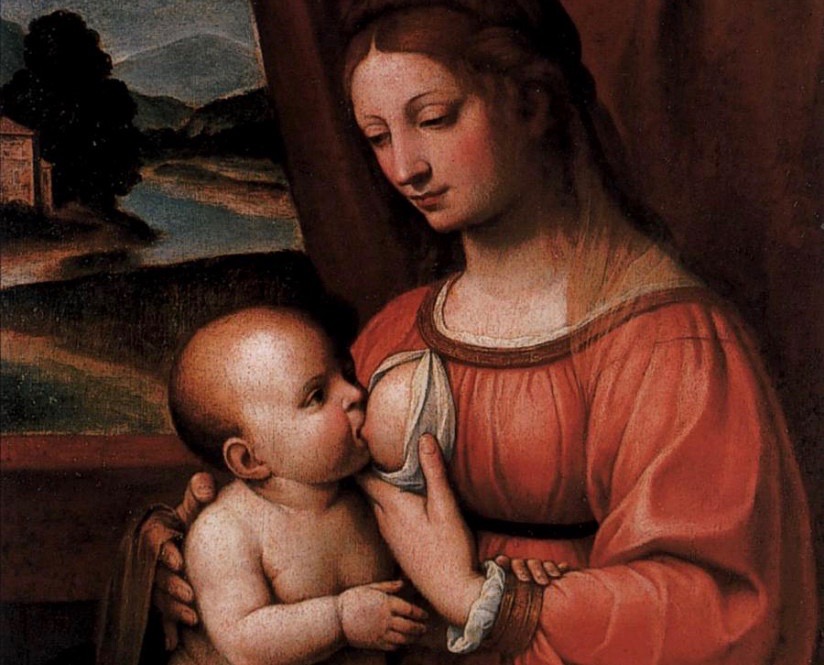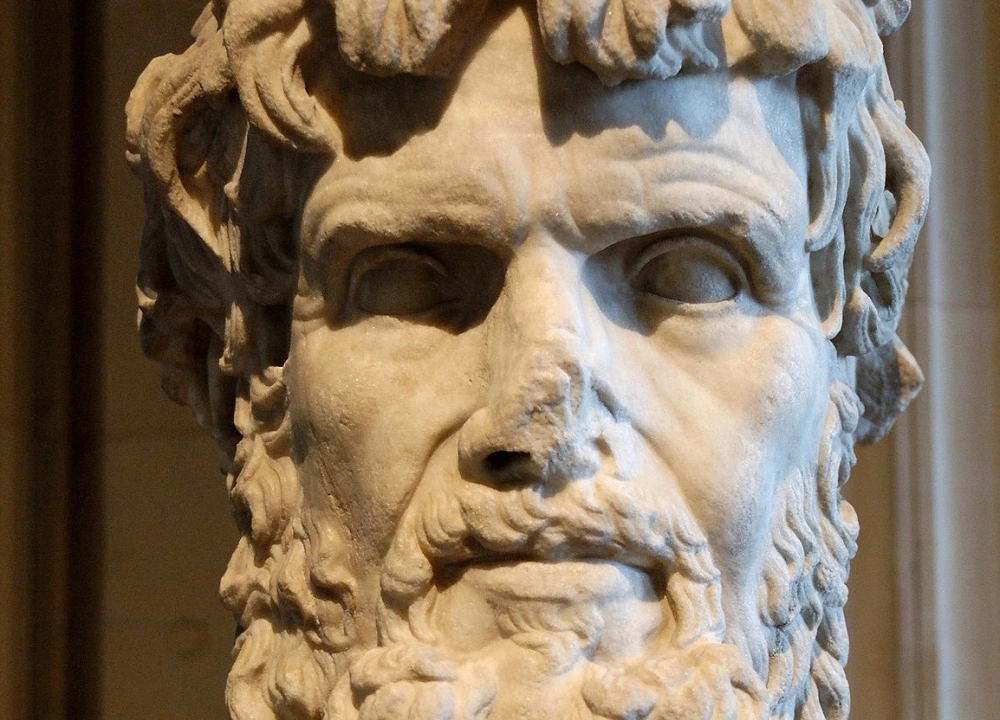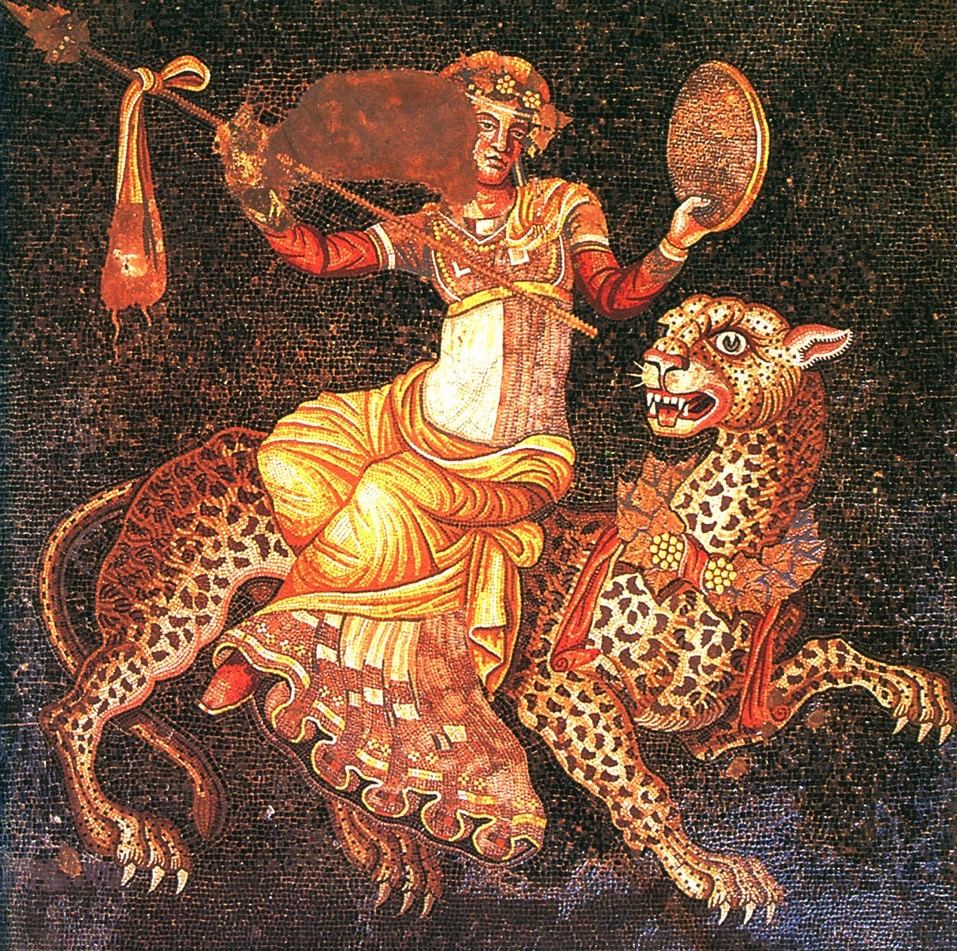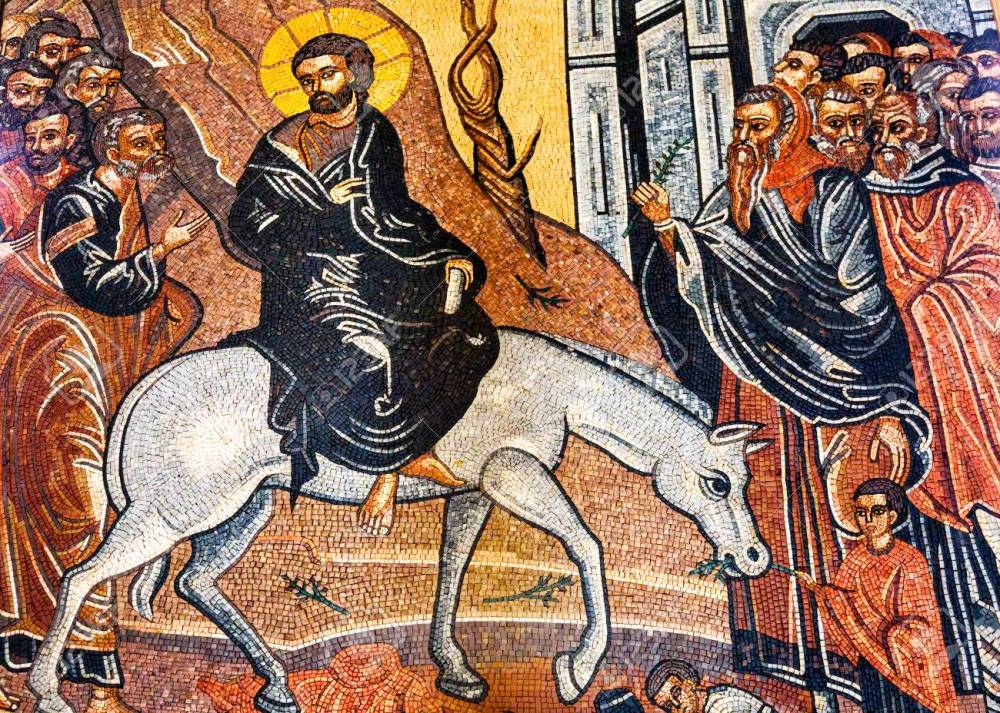Note to reader: A closer examination of the New Testament has forced me to reconsider a previous assumption that is commonly accepted, namely that the divine father of Christ is Yahweh. While it is clear that Christ is a Jewish figure essentially synonymous with Yahweh, it is likely his father is Aryan. Little of my work is concerned with the identity of Christ’s father, so little revision will be required, nevertheless this an important discovery for reasons indicated in these articles. Revisions of my work, appearing here or in book form, will assume the likelihood that Christ’s father is indicated as Aryan.
It is of course well established that the Rabbi Christ is a Jew, indicated as descended from the line of David by New Testament geologies. His name Jesus is an English derivation of the Greek transliteration of “Yehoshua” via Latin. It means “Yahweh is Salvation.” Yet like the Semitic Bacchus or Semitic Mercury, sons of an Aryan Jupiter, it is perhaps the case that, remarkably, his mythical Jewish genes arrive matrilineally as opposed to patrilineally.
Perhaps it is meaningful here as well that Mercury or Hermes’ mother, Maia, a Semitic Oread, shares some phonetic similarity with Mary. Though, as this study explicates, the name Mary appears among other precedents and possible meanings that may or may not share one final common root.

This study has posited already that the impregnated Virgin Mother Mary represents a Proserpina or a Judaized or fallen Aryan woman, who becomes a symbol for the “mother of God,” specifically the Jewish God, Yahweh or more plainly: The Jew. It also advances the view that the multiple Marys, along with a womb like “hell” or tomb, represent a Triple Goddess, that includes both Aryan, Semitizing and Semitized phases.
Mary Magdalene, for instance, appears to represent a fallen “Venus Pandemos,” who is not yet impregnated, yet may be understood, in some manner, as Judaized nevertheless. To wit she is the Aryan Venus “cut off” from the Aryan Caelus, emerging from the ocean. The Biblical city of Magdala, from whence Mary Magdalene takes her name, was supposedly situated on the northwestern shore of the Sea of Galilee.
In the Babylonian Talmud Magdala was known as Magdala Nunayya, מגדלא נוניה, translated there as “tower of fishes.” Hence Magdalene becomes Nymphal, aqueous, sea born or lake born, as was Venus in the myth. We sense as well the inspiration of the Syrian Venus Atargatis. Likewise we find a consumption motif with Aryan as fish resource among “Fishers of Men” as this study explores. Hence Magdalene is the Aryan element of the Triple Goddess that is Mary.
Typically, of course, the supposed “historical figure” of Mary of Nazareth or mother of Jesus is assumed a Jewess by studiers of Christian lore. In the Gospel she is understood as the kinswoman of Elizabeth, mother of John the Baptist and direct descendent of Aaron.

Maybe its meaningful that the name Mary was purported to be popular among Jewesses in this area during this period but, generally, this “historical” understanding of an intelligently developed parabolical myth, where names are chosen primarily for their meanings, is of no value. Hence the name Mary has no ethnic meaning though may indicate simply a woman accessible to Jewry.
It is true, narratively, that Mary was “Galilean.” Here we should understand that it’s beyond question that as a symbol, the Northern situated Galilee represents something of a “Whitopia” or Aryan land among Jewish Symbolists. Here we understand the pregnant, fugitive “virgin” Mary to be further stigmatized, especially among Jews.
Indeed, the term “Galilean,” applied to Christ and his apostles, becomes a slur in the New Testament in the mouths of Christ’s detractors. Though Mary, more specifically, was from Nazareth. As this study explores, the name Nazareth appears to be a reference to the Jewish Vine descending from Jesse, King David’s father.
Here it seems very likely parabolist were indicating a Jewish town or, metaphorically, Mary’s emergence from Jewry or “the Jewish Vine.” We encounter something similar with the Jewess Delilah who is understood as coming from Sowrek, a place that means “choice vines.”
In terms of establishing the racial identity of Christ’s father, Mary’s status as a “Galilean” is perhaps meaningful, if only slightly. After all, Mary of Nazareth’s apparent Jewish identity and the presence of other Jewish “Galileans” in the New Testament, particularly among Christ’s apostles, tends to weaken this as an important proof.
One “historical claim” used to suggest that Jesus’ father was a Roman solider, if not an Aryan, is the claim by the 2nd Century Greek philosopher, Celsus. Celsus wrote that Jesus’ father was a Roman solider named Pantera. He ostensibly learned this from Jews. The Talmud records something similar. There the term “Yeshu ben Pantera” or “Son of the Panther” appears as a title for Christ.[1] The Talmud includes numerous spellings of the father’s name including Pandera, Panthera, Pandira, Pantiri, or Pantera. Analysis suggests them all to be the same figure.

Generally “Pantera,” meaning “Panther” is guessed the actual surname of a Roman solider. Such a surname did in fact appear in Rome and is believed by scholars to have been relatively common among the Roman soldiery. In fact, relevant to this speculation, the tomb of a Roman Solider named Tiberius Julius Abdes Pantera was discovered in 1859 in, of all places, Bingerbrück Germany.[2] According to the inscription on the tomb he lived from 22 BC to 40 AD. Perhaps unsurprisingly scholars have seized on this figure as possibly the very same Pantera appearing in the Talmud.
Here though, pointing to the name Abdes, a Latinized Aramaic name, writers often suggest him as a Semite or a Jew himself. Tantalizingly the name Abdes means “servant of God.” While in theory it is logistically possible for the solider who was entombed at Bingerbrück to have been in the Levant during Christ’s theoretical conception, the connection is, of course, quite tenuous. It lacks first compelling evidence that the historical person of Jesus Christ himself existed.
The Talmud references, on the other hand, are interesting from a mythological perspective. After all, since with Christ we are treated to a mythological figure drawn from figures like Dumizid, Adonis and Bacchus, this is precisely the perspective we are interested in. In the Talmud the term “Yeshu ben Pantera” appears as a slander against Mary suggesting that she wasn’t really a virgin but rather an adulteress. Here supposedly Christ was the son of Mary’s lover Pantera.
Ostensibly the Talmud references may suggest a kind of Racial or Religious vexation or jealousy where it is suggested that Jesus, described in these passages as a “mamzer,”[3] is descended from an affair with a non-Jewish lover and a Jewess. Though the exact meaning of mamzer, מַמְזֵר, is unclear. It may mean “mongrel,” “bastard,” “child of incest” or “child born of a marriage forbidden in Judaism.” The Modern Hebrew suggests it also means “devil,” which as this study discusses, may give no clear hint to racial identify. Of course, as this study reveals, Jewish Symbolists understand Jews themselves as inherently admixed.

It might be clearest to understand that “Pantera” is actually a reference to the panther as a mythological symbol. Indeed, Bacchus or Dionysus was frequently depicted riding a spotted panther or wearing a spotted panther’s hide. Here we remember that Yahweh and Bacchus appear as synonyms to mythographers in the ancient world as this study discusses, with Bacchanal symbols observed in Jewish temples. Likewise, this sort of name usage would, of course, follow a strong pattern in JEM, prevailing through all periods, where names appear symbolically.
Consider as well, a name given to Mary, in the same passages, Stada, is assumed a slandering title as opposed to a real name. Why is Pantera assumed a real name, particularly of some obscure Roman Solider, whose identity would be meaningless to later readers of the Talmud? On the other hand, the possibility that Jews related Pantera to a Roman solider, a non-Jewish archetype, is meaningful. The scholar Bart Ehrman suggests Pantera is a satirical play on the Greek word Parthenos meaning “virgin.” In contrast to other possibilities, this seems unlikely, particularly given the careful attention paid to word usage by Jews. All forms of the word appearing in the Talmud are closer to Pantera than Parthenos.
Indeed, turn of the century, German scholar Heinrich Laible advanced the view that Pantera, as it appears, actually stands for panther here. Laible argued that the panther was a symbol of sexual promiscuity in the ancient world believed to choose his mate among different kinds of animals. For instance, the leopard was thought derived from the lion and the panther. The name of the animal itself, drawn from leon meaning “lion” and padres meaning male panther, reflect this. Hence Ben Pantera was designating Christ a “son of sensuality.” Of course, “son of miscegenation” more explicitly describes it.[4]
It is possible to interpret the Greek word Pantera as “All”-“Beasts” or “Every Beast,” though this typically assumed a folk etymology. Indeed, in medieval bestiaries Panther would become a term also for mythological hybrid beasts. I would suggest this folk etymology is possibly developed from a play on words. Possibly as a symbol, akin to Jacob’s spotted or speckled flock, and as mount dominated by Bacchus, the spotted panther becomes a synonym of intermixture much in the way the mythical Chimera[5] does.

In fact in the Bacchanal symbolism the Panther may become something akin to the Jewish concept of the Messiah’s Donkey by which the Jewish Messiah is supposed to arrive in final triumph. In the Talmud it is suggested as being comprised of “a hundred different colors.”[6] The Donkey, as this study discusses, might be understood as an attribute of the Semitic Vulcan, the Semitic Bacchus, Moses, Judah and Christ each. Importantly, in each case, the Donkey is best understood as a beast servile to a Semitic figure and not as a symbol of the Semitic figure himself.
If Pantera is, in fact, a reference to the Panther, as seems most likely, it may suggest Mary’s lover as non-Aryan, Eastern or Foreign. On the other hand, the Aryan figures of Adam and Esau are associated with blood and the color red, as this study discusses, which suggests them as racially vulnerable, open to or slated for admixture. Hence a similar thing may be appearing here which suggest Pantera as Aryan with the assumption that Mary is Jewish. In other words, the term Pantera becomes relational, an Aryan becomes a Pantera is he is admixing with a Jew.
To the extent the Panther is understood as a reference to the famous God Bacchus or Dionysus, a Symbolic Synonym of Yahweh, it would seem to follow that this servile mount represented a non-Jewish figure akin to the Messiah’s Donkey. We may find it of interest as well that, according to the Sanskrit scholar Arthur Anthony Macdonell,[7] the word Panther is believed to be derived from the Sanskrit word pandara, पाण्डर, meaning “pale yellow, whitish, white.” Again, the idea of the Pantera as an admixing beast may have been reinforced or even brought about by a play on words.

An important thing to remember here is that the Panther, like the Donkey, is understood as a beast dominated by Bacchus or Yahweh. Hence the idea that Jews are irritated by an admixture appearing between Mary or “Stada” and Pantera, in a deeper esoteric manner is thrown into question. Rather on the deepest level the panther is understood as doing their bidding if by less ideal means. Here we understand Mary of Nazareth akin in many ways to the castrating or “hair cutting” Jewess Delilah vis-à-vis an Aryan Pantera. To wit, admixture harms the Aryan and not the Jew.
The striped Tiger as well seems to appear as a Symbolic Synonym for the panther or leopard in the Bacchanal symbolism. The Tiger is also a beast upon which Bacchus was regularly depicted. We have the colloquial slur “Zebra,” used to describe the mulatto. Perhaps something similar is suggested with the stripped tiger in this context. Hence Evola’s “Ride the Tiger,” though appearing from the Eastern wisdom he so loved, becomes a distasteful metaphor even outside of the demoralizing limited ambition it suggests. Don’t ride the tiger, become the Lion. Don’t wait for Spring, bring it into being.
Joseph as Red herring
That Joseph is Jesus’ adoptive father is something of a red herring, suggesting him the cuckold of a Jewish God. After all, according to a nomenclature based typology, the exoterically indicated Jew Joseph, who was “of the House of David,” would become the Aryan Joseph ben Messiah, akin to his Old Testament counterpart or an “Esoteric Aryan.” Here we remember as well that Joseph could be suggested as having descended from converts to Judaism as a consequence of Judean expansion during the Hasmonean Dynasty, as opposed to having been descended from racial Jews.
In Luke 2, after Joseph’s fiancé Mary is pregnant, a census is ordered by Augustus whereby everyone is required to go to their home town to Register. In Luke 2:4, it is said, Joseph, living in the Galilean town of Nazareth with Mary, goes to Bethlehem the City of David because he was “of the house and family of David”[8] Perhaps this is so because he is a convert, perhaps it is so because of his relationship to the Jewess Mary and their impeding marriage. Indeed, the next line says he went there “to register with Mary, who was pledged to him in marriage and was expecting a child.”[9] Possibly this explains why he was “of the house and family of David.”
As the Old Testament Joseph, the New Testament Joseph selflessly plays second-fiddle to assure the ascent of the house of Judah through the figure of Christ. The name Joseph, to this day, is used to indicate a servile or secondary Aryan in JEM. Possibly this is developed as a deliberate red herring, perhaps it is developed to merely increase the possibility that Jesus is understood by esotericists as having an Aryan father and/or perhaps, most likely, it is to present a cuckold, weak Aryan father deferent to the Jewish identity of a psychically circumcising, adulterous mother.

As a model, Joseph weans clueless cuckolds. Regardless, according to Epiphanius, Jewish-Christian Ebionites and Nazareans assumed Joseph the biological father. Maybe the symbolism suggests an Aryan father cannot be the real father of a Jew, who owes his identity to his mother, even if he is, indeed, the biological father.
In the end the Aryanness of Jesus’ father and the Jewishness of his mother are best corroborated, naturally, in the language of the text of the New Testament itself, were Jewish Symbolists carefully set their clues. “The Annunciation” of the virgin Mary, coupled with the knowledge of Mary’s origin in Nazareth, is especially enlightening.
Part II here: The Racial Identity of Christ’s Parents Part II: The Annunciation Proof
[1] Passages suggesting a figure named “Son of Pantera” was the result of an adulterous affair by Mary appear in Shabbat 104b and Sanhedrin 67a. Elsewhere, such as in Tosefta Hullin 2:22f and Qohelet Rabbah 1:8(3), Jesus is specifically connected to the “son of Pantera.”
[2] The panther: posthumous poems By James Whitehead, Michael Burns 2009 ISBN 0-913785-12-1 pages 15-17
[3] A bastard or illegitimate child or a child born of a marriage forbidden in Judaism.
[4] Jesus Christus in Talmud, 2nd ed. 1900.
[6] Sanhedrin 98a
[7] Macdonell, A. A. (1929). “पाण्डर pând-ara”. A practical Sanskrit dictionary with transliteration, accentuation, and etymological analysis throughout. London: Oxford University Press. p. 95.
[8] Luke 2:4
[9] Luke 2:5
Perhaps the deepest or most comprehensive insight in this whole study (for me): “To wit, admixture harms the Aryan and not the Jew.”
LikeLike